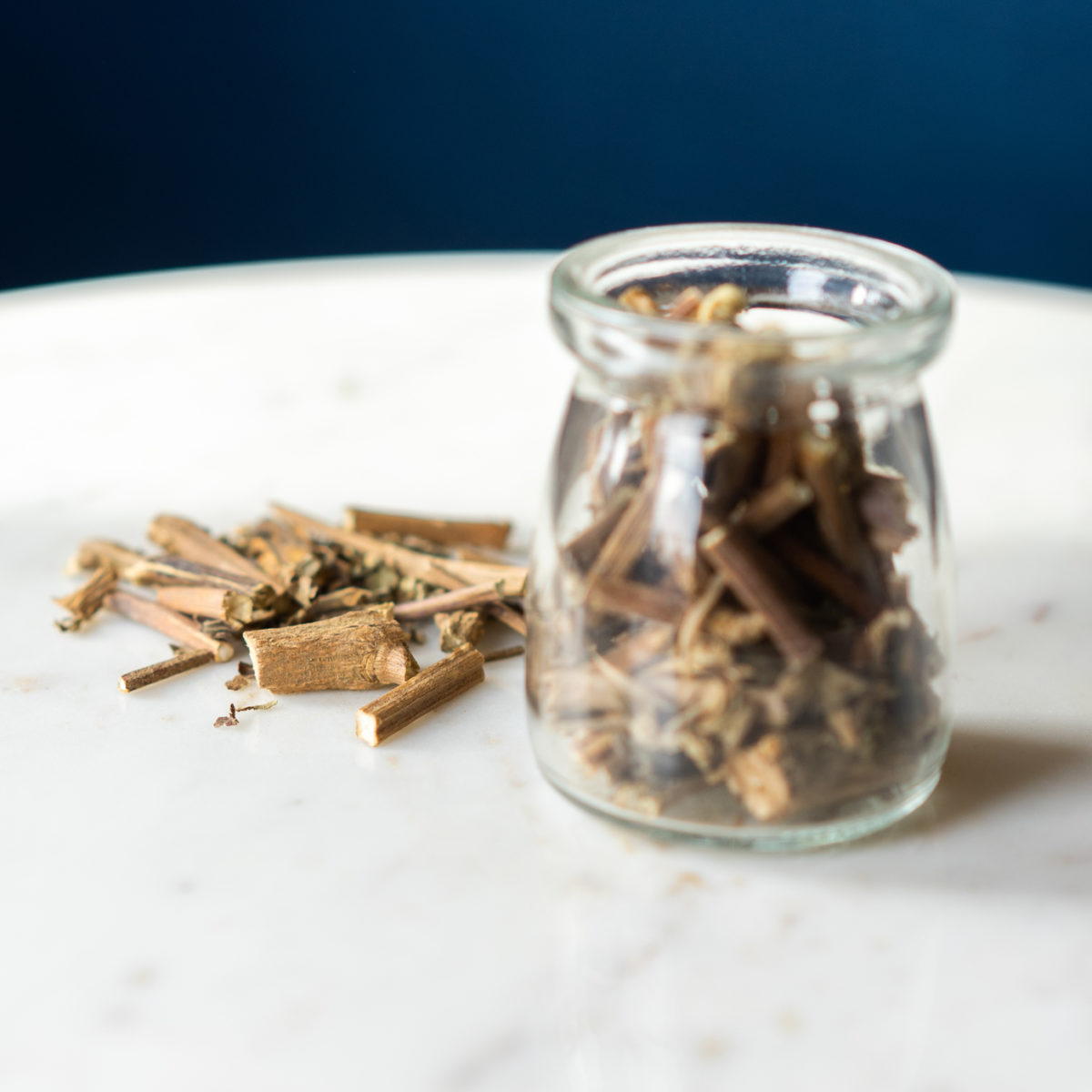
COMMON NAME (Chinese Name)
Anise Hyssop; Korean Mint (Huò Xiāng)
BOTANICAL NAME
Agastache Rugosa
USES
The chemical components and derivatives of the anise hyssop plant parts used in supplementation differ, and therefore have different medicinal uses and outcomes. For example, extracts derived from the stems have the greatest measurable antioxidant effects, followed by extracts of the leaves, flowers, and roots, respectively. Moreover, the different chemical components have contrasting impacts on coagulation, making some derivatives pro-coagulant. In contrast, others have anticoagulant properties based on whether they are richer in pro- or anticoagulant compounds.
Huo xiang refers to two plants, used interchangeably in Chinese medicine: anise hyssop (Agastache rugosoa) and patchouli (Pogostemon cablin). In the United States anise hyssop is more common and is widely grown for herbal and ornamental use. The plant has a delightful anise taste, as befits an herb categorized in Chinese medicine as aromatically dispelling dampness. It is classified as warm, pungent and aromatic and especially affects the Lung, Spleen and Stomach meridians. It is antioxidant, nervine, and helps digestion.
When taken alone, Anise hyssop may help relieve stomach discomfort and digestive pain as well as headaches and fever. These outcomes point to both anti-inflammatory and anti-hypertensive properties. When ingested in combination with other GI-soothing herbs (like tangerine peel), Anise hyssop may significantly increase and help regulate gut motility. The ultimate effect of this function is similar to that of commercially-available probiotics.
Anise hyssop derivatives may have a protective effect against photoaging caused by UVB exposure. As a result, topical applications of Huo xiang leaf decoctions (using hot water) show significant potential for effective use in anti-aging and UVB-protective cosmetic products. These anti-aging effects are augmented by fermentation, suggesting that lab-made cosmetic products containing Anise hyssop may ultimately be more effective than at-home decoctions and dilute extracts.
The Chinese use Huo xiang to relieve damp conditions characterized by edema. It is also used in China to dispel morning sickness and to relieve hangovers. A decoction or pill formula called Huo Xiang Zheng Qi Tang is widely used for relief from damp summer humidity. The herb is topically used against fungal infections like Candida or Tinea.
PREPARATION & ADMINISTRATION
Huo xiang supplements most often take the form of decoctions, extracts, and oils made from the leaves and other dried parts of the plant. These different forms are commonly available for purchase, as are the whole or crushed, dried leaves, flowers, and roots. The age of the plant at the time of harvest, and (strangely enough) the age of its mother-plant at the time of propagation, can dramatically alter the chemical compounds expressed in hot water decoctions of dried plant materials.
PRECAUTIONS
Little information is available regarding the potential risks and side-effects associated with oral or topical use of Huo xiang and its derivatives. Given its tendency to (inconsistently) impact coagulation, people with a history of bleeding or blood clots or who are taking anticoagulant medications (like Warfarin) should not even consider taking Anise hyssop supplements without seeking physician approval.
You should consult with a certified herbalist, physician or other qualified healthcare professional before taking Anise hyssop.
REFERENCES
Chen, John, Chen, T & Cramton, L. Art of Medicine Press, Inc. City of Industry, CA USA. 2003. 1327 pp ISBN: 0-9740635-0-9 , http://aompress.com/herbology
“Agastache.” Gale Encyclopedia of Alternative Medicine, Encyclopedia.com, 13 Jan. 2020, https://www.encyclopedia.com/medicine/encyclopedias-almanacs-transcripts-and-maps/agastache.
Bielecka, Monika, et al. “Age-Related Variation of Polyphenol Content and Expression of Phenylpropanoid Biosynthetic Genes in Agastache Rugosa.” Industrial Crops and Products, vol. 141, 2019, p. 111743., doi:10.1016/j.indcrop.2019.111743.
Cao, Pengran, et al. “Chemical Constituents and Coagulation Activity of Agastache Rugosa.” BMC Complementary and Alternative Medicine, vol. 17, no. 1, June 2017, doi:10.1186/s12906-017-1592-8.
Christenbury, Janet. “Researchers Find Probiotics May Increase Intestinal Motility in Mouse Model.” Medical Xpress – Medical Research Advances and Health News, Medical Xpress, 5 Apr. 2019, https://medicalxpress.com/news/2019-04-probiotics-intestinal-motility-mouse.html.
Desta, Kebede Taye, et al. “The Polyphenolic Profiles and Antioxidant Effects OfAgastache RugosaKuntze (Banga) Flower, Leaf, Stem and Root.” Biomedical Chromatography, vol. 30, no. 2, 2015, pp. 225–231., doi:10.1002/bmc.3539.
Haiyan Gong, Xiaoying Zhou, Ming Zhu, Xiumin Ma, Xin Zhang & Shuge Tian (2012) Constituents of Essential Oil Isolated from the Dried Flower and Leaf of Agastache rugosa (Fisch. et Mey) from Xinjiang, in China, Journal of Essential Oil Bearing Plants, 15:4, 534-538, DOI: 10.1080/0972060X.2012.10644084
Oh, Yuri, et al. “Attenuating Properties of Agastache Rugosa Leaf Extract against Ultraviolet-B-Induced Photoaging via up-Regulating Glutathione and Superoxide Dismutase in a Human Keratinocyte Cell Line.” Journal of Photochemistry and Photobiology B: Biology, vol. 163, 2016, pp. 170–176., doi:10.1016/j.jphotobiol.2016.08.026.
Shin, Daehyun, et al. “Probiotic Fermentation Augments the Skin Anti-Photoaging Properties of Agastache Rugosa through up-Regulating Antioxidant Components in UV-B-Irradiated HaCaT Keratinocytes.” BMC Complementary and Alternative Medicine, vol. 18, no. 1, 2018, doi:10.1186/s12906-018-2194-9.
Wang, and Tang. “Http://En.cnki.com.cn/Article_en/CJFDTotal-ZSFX201015034.Htm.” Chinese Journal of Experimental Traditional Medical Fomulae, 2010.
